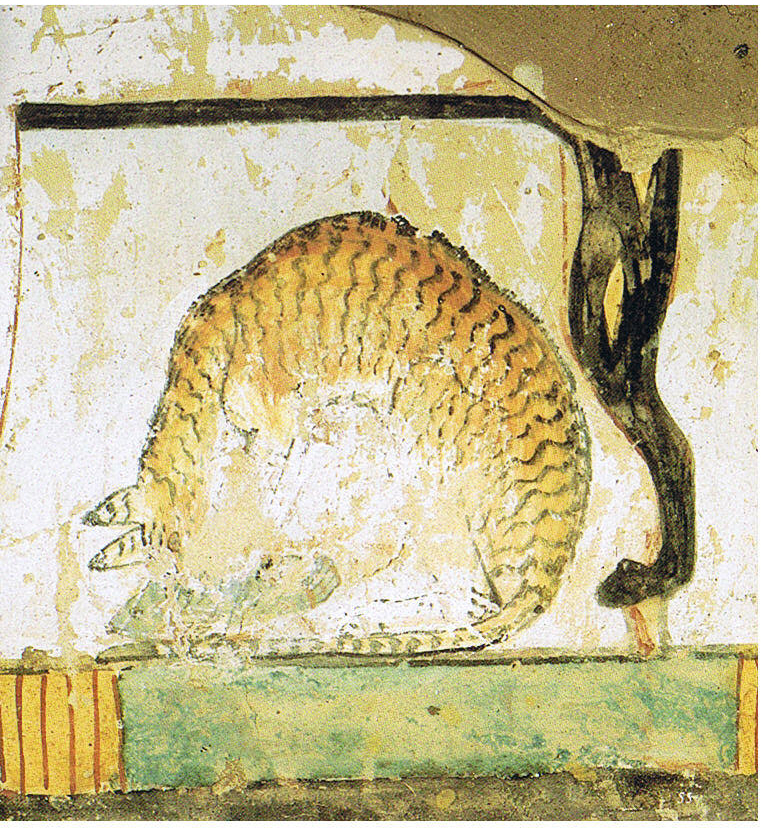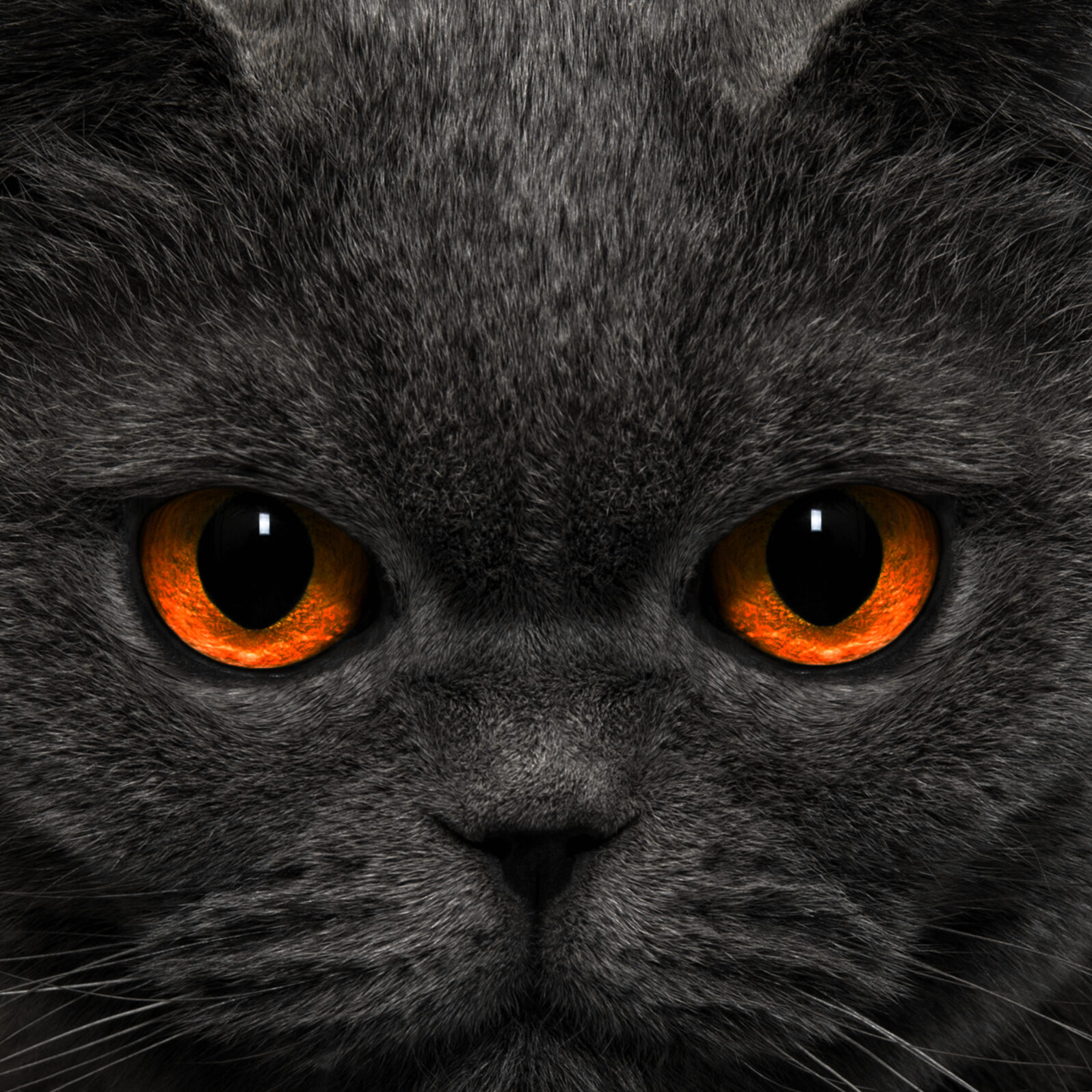Some Mysteries About Cats … Solved!
Pet dogs outnumber cats but they’ll never excel at creating the aura of mystery at which the cat effortlessly succeedsFollowing up on the ways cats are intelligent, it might be fun to look at how humans got involved with them. It turns out that there are reasons why we have always found cats mysterious, compared to dogs.
Why are people so fond of cats?
There are lots of reasons but here’s an interesting find: Domestic cats’ meows for attention are said to be unique to their relationship with humans. Oxford neuroscientist Morten Kringelbach has found a way to map human responses via magnetoencephalograph (MEG) studies that measure electrical activity in our brains in real time. He found that the cry of a baby triggered a response in the orbitofrontal cortex before study subjects had identified the sound consciously. Adult crying elicited a much weaker response.
But there was another sound that produced the same reaction as a baby’s cry, a cat’s meow.
Morten Kringelbach: There seems to be striking similarities between the way that we process “cat meowing” and that of “baby crying.” We get activity in the auditory cortices just like we do with anything else, but, before we become conscious of it, we get activity in the orbital frontal cortex suggesting that this is something that we need to take care of.
NOVA, “Cat Tales” at PBS (February 19, 2020)
Dr. Kringelbach doesn’t think that the cat adopts this tone with humans as a conscious strategy: “It’s just that they know that this works, just like we know that smiling at our parents worked when we were kids.” Cats typically make a number of efforts to solve a problem, then remember and stick with the ones that worked. In any event, if you think you are being manipulated—you are right.
Can we really understand what cats are trying to tell us by looking at their faces?
Lauren Finka, a research associate at the Nottingham-Trent University School of Animal Rural & Environmental Sciences points out that cats lack a facial muscle that both dogs and humans use to communicate:
Narrator: Both dogs and humans have a muscle that is responsible for raising the inner eyebrow, which we use for showing things like sadness and concern. Cats don’t have this muscle. So, cats are physically incapable of having faces as expressive as dogs.
However, Finka’s research suggests that cats can communicate some emotion on their faces. It’s just we don’t speak their language…
NOVA, “Cat Tales” at PBS (February 19, 2020)
One might add that, because cats are prey animals as well as predators, they may keep quiet and hide when experiencing illness or injuries. The fact that cats don’t cooperate doesn’t mean they don’t want any help. It’s more that they don’t envision help from those who can see their weakness.
When did cats start living with humans?
We’re fairly sure now, thanks to a groundbreaking 2007 study by geneticist Carlos Driscoll et al. that it is Felis silvestris Lybica, a small wild cat domesticated at various times and places. Beyond that, archaeologists can provide some dates.
In 2004, a grave dating from 9500 years ago was found on Cyprus, with two occupants facing each other amid the grave goods, a man and a cat:
But researchers have also stumbled across hints that cats were domesticated much earlier. Experts have found 10,000-year-old engravings and pottery that depict cats dating to the Neolithic period (late Stone Age), Vigne said. He notes such finds provide evidence that, even then, cats had a spiritual significance.
John Pickrell, “Oldest Known Pet Cat? 9,500-Year-Old Burial Found on Cyprus” at National Geographic (April 8, 2004)
Indeed. It’s likely that the man died of natural causes but the cat did not. Perhaps the cat, who appears to have been brought to the island by boat and fed by humans, was considered a guide to the next world. (The image below is a mural of a cat eating a fish under a chair from an Egyptian tomb of 3500 years ago (public domain))

The timing of the find is not surprising. During that period, western Asia (the Near East) was adopting an agricultural way of life. Agriculture requires storing crops and seed grains for many months. Rodent control becomes essential. It’s thought that wild cats first began hanging around agricultural settlements in order to hunt mice and rats. Unlike humans, cats can hear the ultrasonic squeaks of rodents. Humans, impressed with the cats’ mysterious skills, decided to at least tolerate them.
In this sense, cats are largely thought to have domesticated themselves:
In a new comprehensive study of the spread of domesticated cats, DNA analysis suggests that cats lived for thousands of years alongside humans before they were domesticated. During that time, their genes have changed little from those of wildcats, apart from picking up one recent tweak: the distinctive stripes and dots of the tabby cat.
Casey Smith, “Cats Domesticated Themselves, Ancient DNA Shows” at National Geographic (June 19, 2017)
Whether or not humans actually bred cats, feline geneticist Leslie Lyons told NOVA that some genetic changes have likely made tame cats less fearful, hence more friendly to live with.
How did cats come to be, famously, associated with religion in Egypt?
Egyptologist Salima Ikram told NOVA that the Egyptians had a reason for venerating cats:
Salima Ikram: Ancient texts tell us that not only did cats kill rodents, but they also killed snakes. So, of course, the Egyptians love this, because they were much safer as a result. Imagine, if you’re a mother and your child is crawling around and then a snake approaches and your pet cat kills it. Also, for them, the idea that a cat was killing a snake meant that the sun god Ra was killing the evil snake Apophis. So, it was sort of doing double duty.
NOVA, “Cat Tales” at PBS (February 19, 2020)
The PR didn’t turn out so well for the average cat. The cult of Bastet, the cat goddess who was Ra’s daughter, sacrificed cats on a huge scale and turned them into mummies, to attract the goddess’s favor toward humans. One cat cemetery featured 300,000 mummies Here’s a recent find, reported in 2018:
Cats later spread around the world when they were taken onto ships to kill the rodents that gnawed food stores, ropes, and later, electrical wiring. Many superstitions developed around the ship’s cat, for example,
– A ship’s cat sneezing meant that it was going to rain.
– A frisky ship’s cat was an omen of a windy day.
– A ship’s cat that licked its fur against the grain signaled that a hailstorm was on its way.
While these sailors’ superstitions may sound absurd, they are actually somewhat based in reality. Due to their sensitive inner ears, cats are able to detect changes in weather more acutely than other animals. Cats can sense the low atmospheric pressure that often comes before storms at sea, and this may cause them to act restless or nervous.
“Boating Myths and Superstitions” at Formula (July 16, 2019)
As so often, the superstition was based on something the cat actually does that humans don’t immediately or easily understand.
According to the American Pet Products Association (APPA), approximately 43 million cats live in households in the United States as of a 2019–2020 survey. Pet dogs outnumber cats at 63.4 million but they’ll never excel at creating the aura of mystery at which the cat effortlessly succeeds.
You may also enjoy these stories on cat intelligence and emotions:
In what ways are cats intelligent? Cats have nearly twice as many neurons as dogs and a bigger and more complex cerebral cortex. Timeless question: Are cats smarter than dogs? Yes, in some ways. But that’s not the whole story.
Cats do bond with people. Both cats and kittens showed about the same level of attachment to caregivers as children and dogs did.
and
Cats do recognize their names. They recognize them as signals but not as abstractions.
